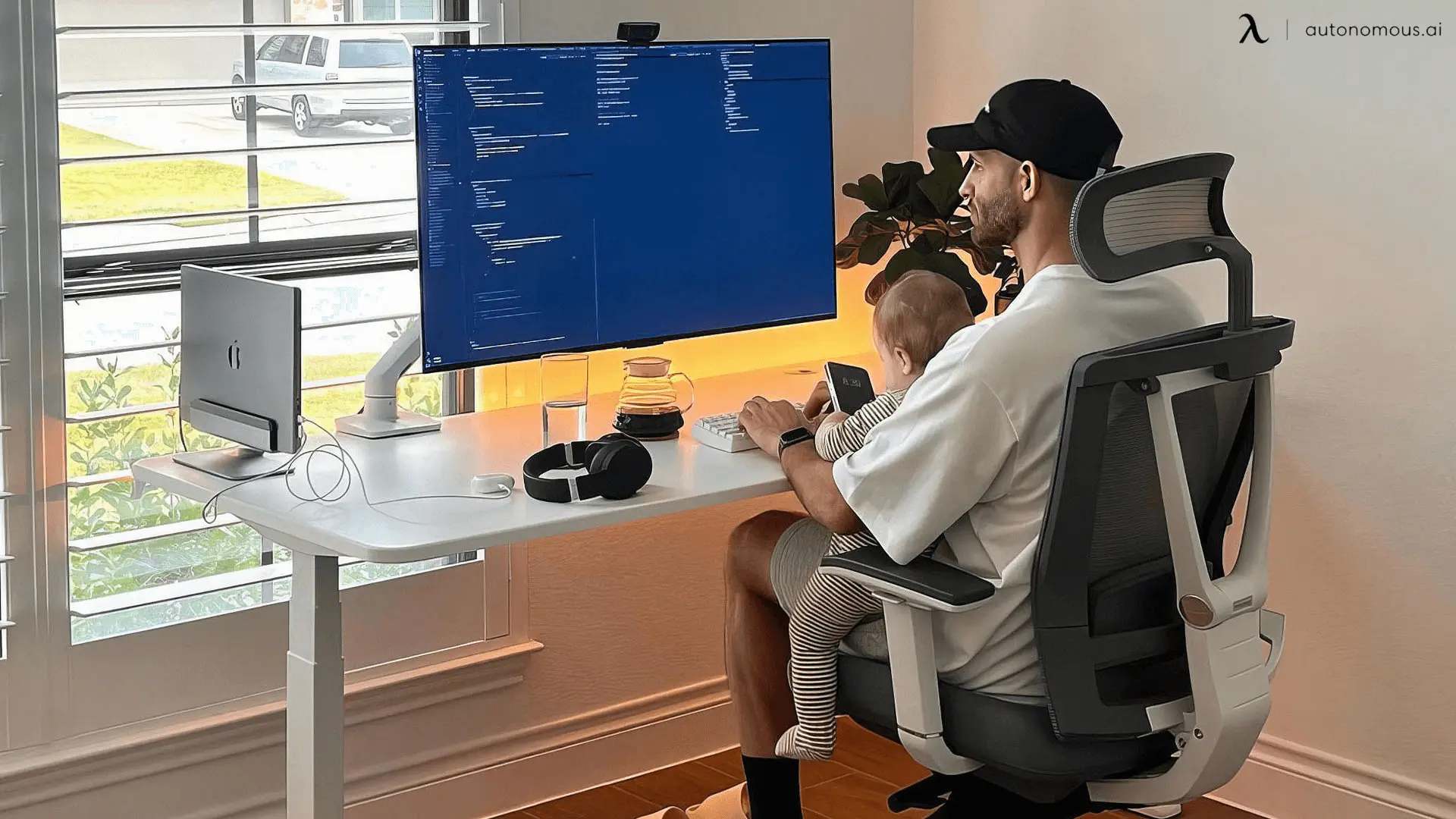
Deep Work vs Shallow Work: Unlocking Your Focus & Potential
Table of Contents
- What is Deep Work?
- What is Shallow Work?
- The Key Differences Between Deep Work and Shallow Work
- Why Do We Get Stuck in Shallow Work?
- How to Minimize Shallow Work and Maximize Deep Work
- The Role of Technology in Deep vs Shallow Work
- The Impact of Deep Work on Personal and Professional Growth
- Shallow Work is Not Always Bad
- FAQs
- Conclusion
In today’s fast-paced world, we are constantly juggling tasks that demand our attention. Some tasks require intense focus, while others are simple and easily completed in short bursts. Understanding the difference between deep work and shallow work is crucial for maximizing your productivity and achieving long-term success. In this article, we’ll dive into the distinctions between these two types of work, explore deep work vs shallow work examples, and provide tips for maximizing the benefits of both.
What is Deep Work?
Deep work refers to the focused, undistracted work that demands intense cognitive effort. It requires complete immersion in a task that challenges your intellect and creativity, enabling you to make significant progress on complex projects. Tasks that involve deep work require concentration and time, and they are often tied to your long-term goals and personal growth.
Examples of deep work include:
- Writing a report or book
- Coding or software development
- Brainstorming and strategy planning
- Solving difficult mathematical or scientific problems
- Designing or creating original work
The benefits of deep work are clear: it leads to high-quality output, skill development, and a strong sense of accomplishment. Engaging in deep work regularly allows you to develop expertise in your field and make significant strides toward achieving your goals.
What is Shallow Work?
On the other hand, shallow work is the kind of work that doesn’t require much cognitive effort or deep focus. These tasks are typically repetitive, administrative, and easy to complete, but they don’t contribute significantly to your long-term goals. Shallow work often feels urgent but provides little value in terms of personal growth or achieving high-impact results.
Examples of shallow work include:
- Responding to emails
- Attending meetings with little to no decision-making
- Organizing files and documents
- Browsing social media or checking news updates
- Making quick administrative decisions that don’t require deep thought
While shallow work is necessary and part of every job, it’s less meaningful in terms of personal and professional growth. It’s the kind of work that keeps you busy but doesn’t lead to real progress toward your bigger objectives.
The Key Differences Between Deep Work and Shallow Work
1. Cognitive Load
Deep work requires a significant amount of mental energy and focus. It challenges your intellect and forces you to think critically or creatively.
Shallow work, on the other hand, is easy to do and doesn’t require much thought. It’s often reactive and can be done in short, fragmented intervals.
2. Impact on Long-Term Goals
Deep work is directly tied to achieving long-term goals. It helps you develop new skills, create innovative ideas, and move closer to mastery in your field.
Shallow work, while necessary, doesn’t contribute to your long-term success. It’s the work you do to maintain the day-to-day aspects of your job but doesn’t lead to personal growth or significant progress.
3. Task Duration
Deep work usually takes longer, sustained effort. You need uninterrupted time to focus and make real progress.
Shallow work can be done in shorter bursts. It’s often broken up throughout the day and completed in small, manageable chunks.
4. Emotional Satisfaction
Deep work tends to be highly rewarding. The sense of accomplishment after a deep work session is often greater than after completing shallow work.
Shallow work, while sometimes satisfying to check off your list, often leaves you feeling unfulfilled. It’s the type of work that doesn’t provide a sense of achievement.

Why Do We Get Stuck in Shallow Work?
It’s easy to fall into the trap of shallow work, and most of us do it on a daily basis. Here’s why:
- Distractions:
Constant notifications, emails, and phone calls can pull you away from deeper, more meaningful tasks. The temptation to check your phone or quickly respond to a message can derail your focus.
- Urgency Bias:
There’s a tendency to prioritize tasks that feel urgent, even if they are not important. Answering emails or attending meetings often feels like it needs to be done immediately, but it doesn’t contribute to your long-term goals.
- Comfort Zone:
Shallow work is easy. It doesn’t require deep thinking or creativity, and it can be done with minimal effort. As a result, it’s tempting to stick to tasks that don’t require much mental energy.

How to Minimize Shallow Work and Maximize Deep Work
Now that we understand the difference between deep work vs shallow work, let’s look at how to make the most of your deep work time and minimize shallow tasks:
- Schedule Deep Work Blocks:
Set aside specific times each day for deep work. These blocks should be uninterrupted, focused periods where you can dive into complex tasks without distractions. For example, you might dedicate 90 minutes of deep work in the morning before responding to emails or attending meetings.
- Limit Shallow Work:
Identify tasks that can be delegated or minimized. For example, batch similar tasks together, such as responding to emails or handling administrative work, so they don’t interrupt your deep work sessions.
- Create a Distraction-Free Environment:
To maximize deep work, it’s essential to eliminate office distractions. Turn off phone notifications, close unnecessary tabs on your browser, and use apps like website blockers to keep distractions at bay.
- Prioritize Deep Work:
Deep work rules can help you structure your time more effectively. Make deep work a priority by scheduling it during your peak energy hours, when you’re most focused and productive. For some, this might be early in the morning; for others, it might be later in the day.
The Role of Technology in Deep vs Shallow Work
Technology can both support and hinder deep work. While certain apps and tools can help you improve focus and productivity, others can distract you and encourage shallow work.
- Tech Tools for Deep Work: Apps like the Liven app and Brainway can help reduce distractions, improve mental wellness, and enhance focus during deep work sessions.
- Tech’s Contribution to Shallow Work: Constant notifications from emails, social media, and messaging apps can create a cycle of shallow work. Use technology strategically by turning off notifications and setting boundaries for when you check your phone or browse the internet.
The Impact of Deep Work on Personal and Professional Growth
Regularly engaging in deep work allows you to produce higher-quality results in less time, while also helping you build skills, knowledge, and expertise. Over time, deep work fosters:
- Mastery in your field
- Enhanced decision-making and problem-solving abilities
- Greater creativity and innovation
- Increased job satisfaction and a sense of accomplishment
While shallow work has its place, deep work is the key to personal and professional growth. It’s through deep, focused effort that you make real strides in your career and life.
Shallow Work is Not Always Bad
Although shallow work isn’t as impactful as deep work, it still has its place. Shallow work is necessary to maintain the day-to-day functions of your job or personal life. The key is finding a balance between the two. By scheduling deep work sessions and batching shallow work, you can ensure that you’re making progress on your long-term goals without neglecting the tasks that need to get done.

FAQs
How do I identify deep work vs shallow work in my daily routine?
To identify deep work, look for tasks that require full focus, problem-solving, or creativity—anything that pushes your cognitive abilities. Shallow work includes tasks that are repetitive, administrative, or easy to complete, often requiring little mental energy.
Can deep work improve my overall productivity?
Yes, deep work can significantly improve productivity. By dedicating uninterrupted time to meaningful tasks, you create higher-quality output faster than by constantly switching between shallow tasks. Focused, deep work leads to more impactful results.
What are the best strategies for managing both deep and shallow work?
The best approach is to schedule deep work during your most productive hours, while limiting shallow work to specific times of the day. Use tools like time-blocking and batch processing to keep distractions at bay and maximize focused time.
How can I avoid distractions during deep work?
To avoid distractions, create a dedicated workspace, mute notifications, and use apps that block distracting websites. Also, try setting specific goals for each session to keep your focus sharp.
How do I stay consistent with deep work over time?
Start small and gradually increase the time you dedicate to deep work each day. Tracking your progress and setting weekly goals can help you stay on track and gradually build a habit of focusing on challenging tasks.
Conclusion
Understanding the difference between deep work vs shallow work is essential for productivity and personal growth. While both types of work are necessary, deep work is where the magic happens — it’s where you make significant strides toward your goals and unlock your full potential. By scheduling dedicated deep work time, limiting distractions, and creating a focus-friendly environment, you can shift the balance in favor of deep work and experience more fulfilling and productive days.
To create an environment that supports deep work, consider designing a productive desk setup, using tools like the Autonomous Desk Focus, which allows you to easily switch between sitting and standing, enhancing comfort and focus. Additionally, making your workspace a productive work environment and incorporating productive hobbies into your routine can help maintain a balanced and effective workflow.
Spread the word
.svg)









